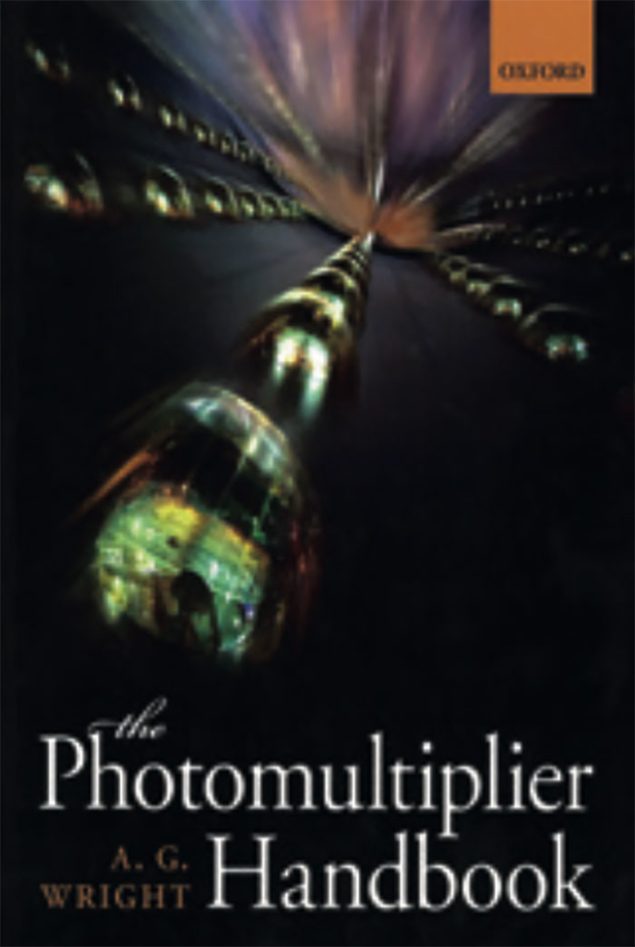By A G Wright
Oxford University Press

This volume is a comprehensive handbook aimed primarily at those who use, design or build vacuum photomultipliers. Drawing on his 40 years of experience as a user and manufacturer, the author wrote it to fill perceived gaps in the existing literature.
Photomultiplier tubes (PMTs) are extremely sensitive light detectors, which multiply the current produced by incident photons by up to 100 million times. Since their invention in the 1930s they have seen huge developments that have increased their performance significantly. PMTs have been and still are extensively applied in physics experiments and their evolution has been shaped by the requirements of the scientific community.
The first group of chapters sets the scene, introducing light-detection techniques and discussing in detail photocathodes – important components of PMTs – and optical interfaces. Since light generation and detection are statistical processes, detectors providing electron multiplication are also considered statistical in their operation. As a consequence, a chapter is dedicated to some theory of statistical processes, which is important to choose, use or design PMTs. The second part of the book deals with all of the important parameters that determine the performance of a PMT, each analysed thoroughly: gain, noise, background, collection and counting efficiency, dynamic range and timing. The effects of environmental conditions on performance are also discussed. The last part is devoted to instrumentation, in particular voltage dividers and electronics for PMTs.
Each chapter concludes with a summary and a comprehensive set of references. Three appendices provide additional useful information.
The book could become a valuable reference for researchers and engineers, and for students working with light sensors and, in particular, photomultipliers.








